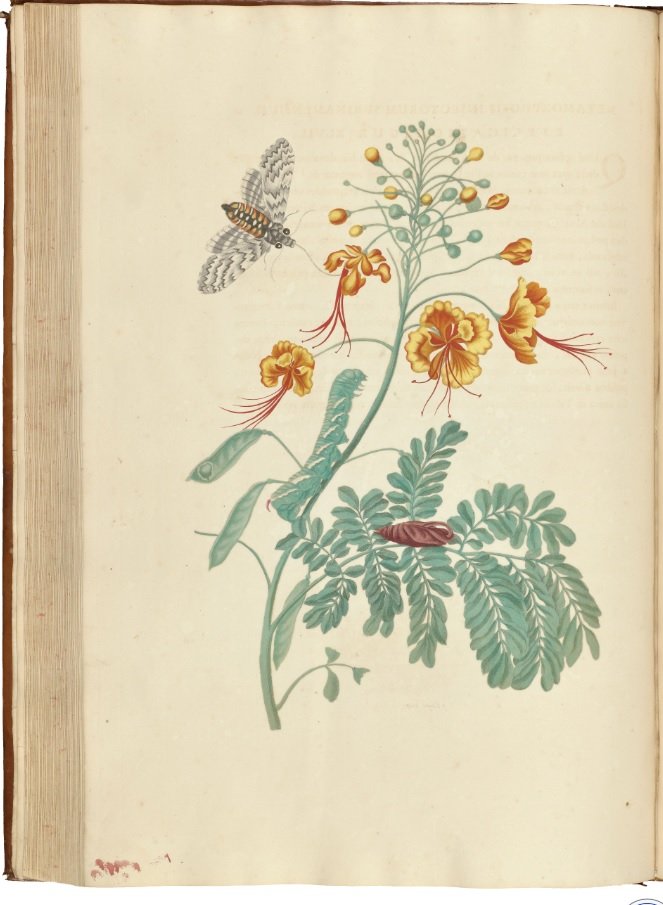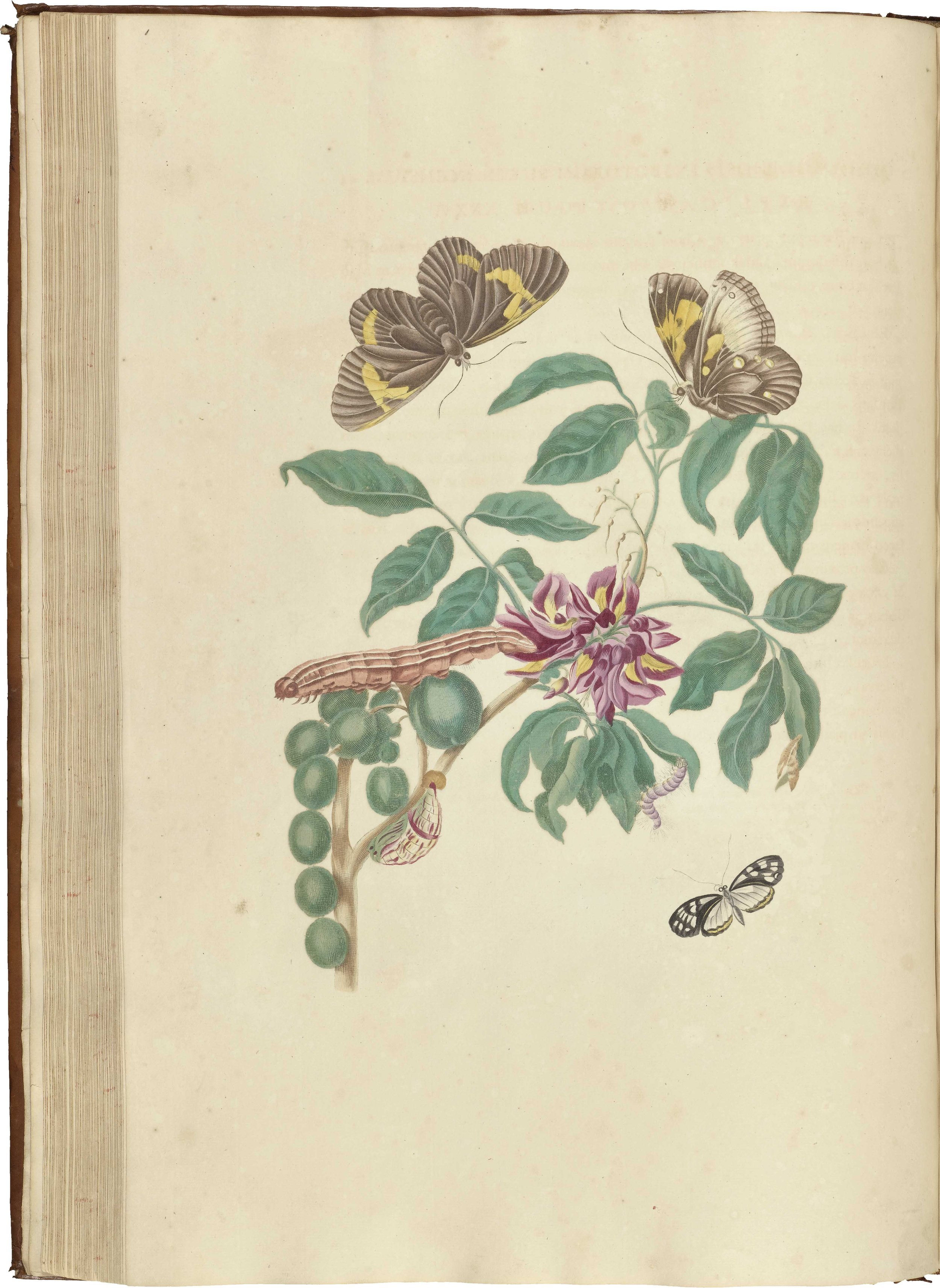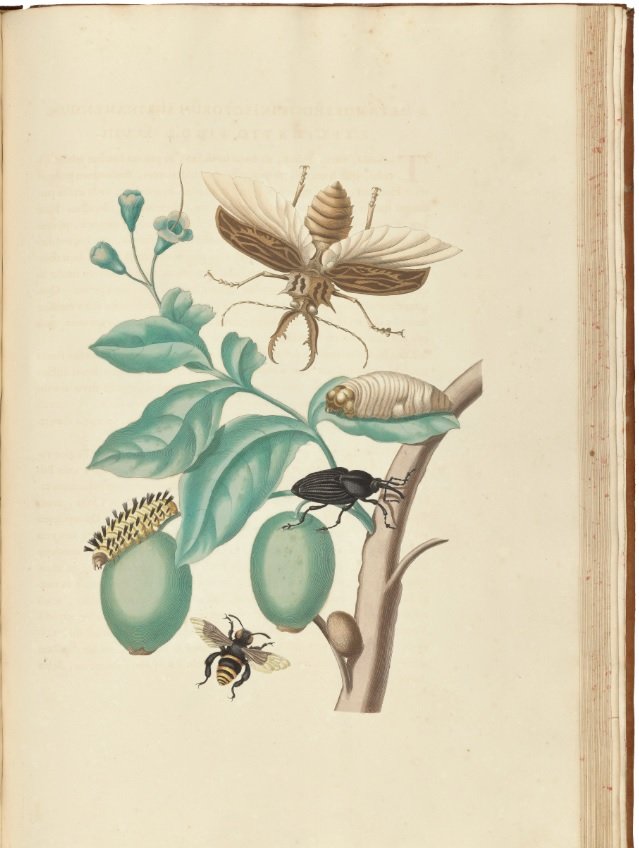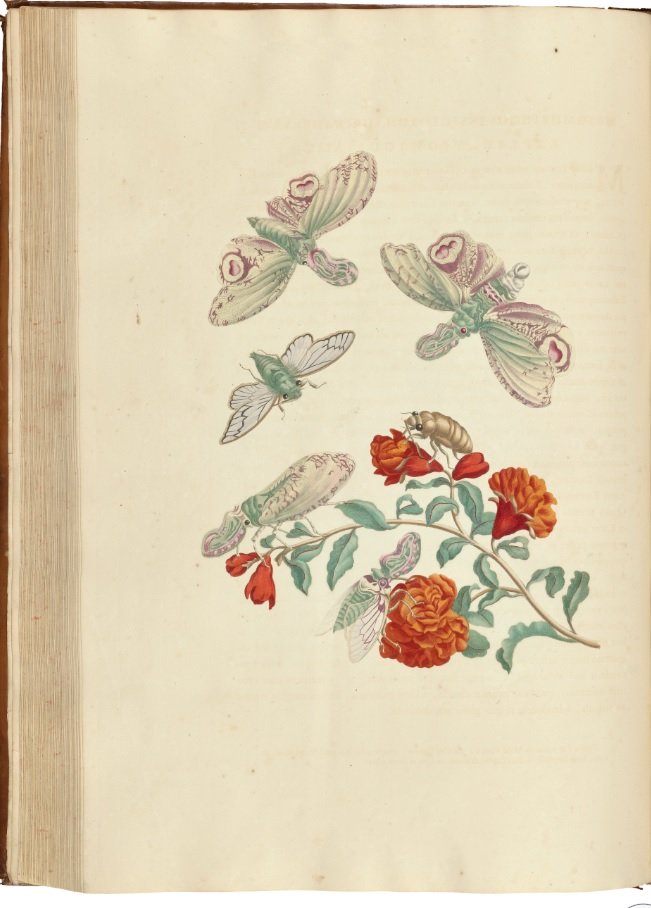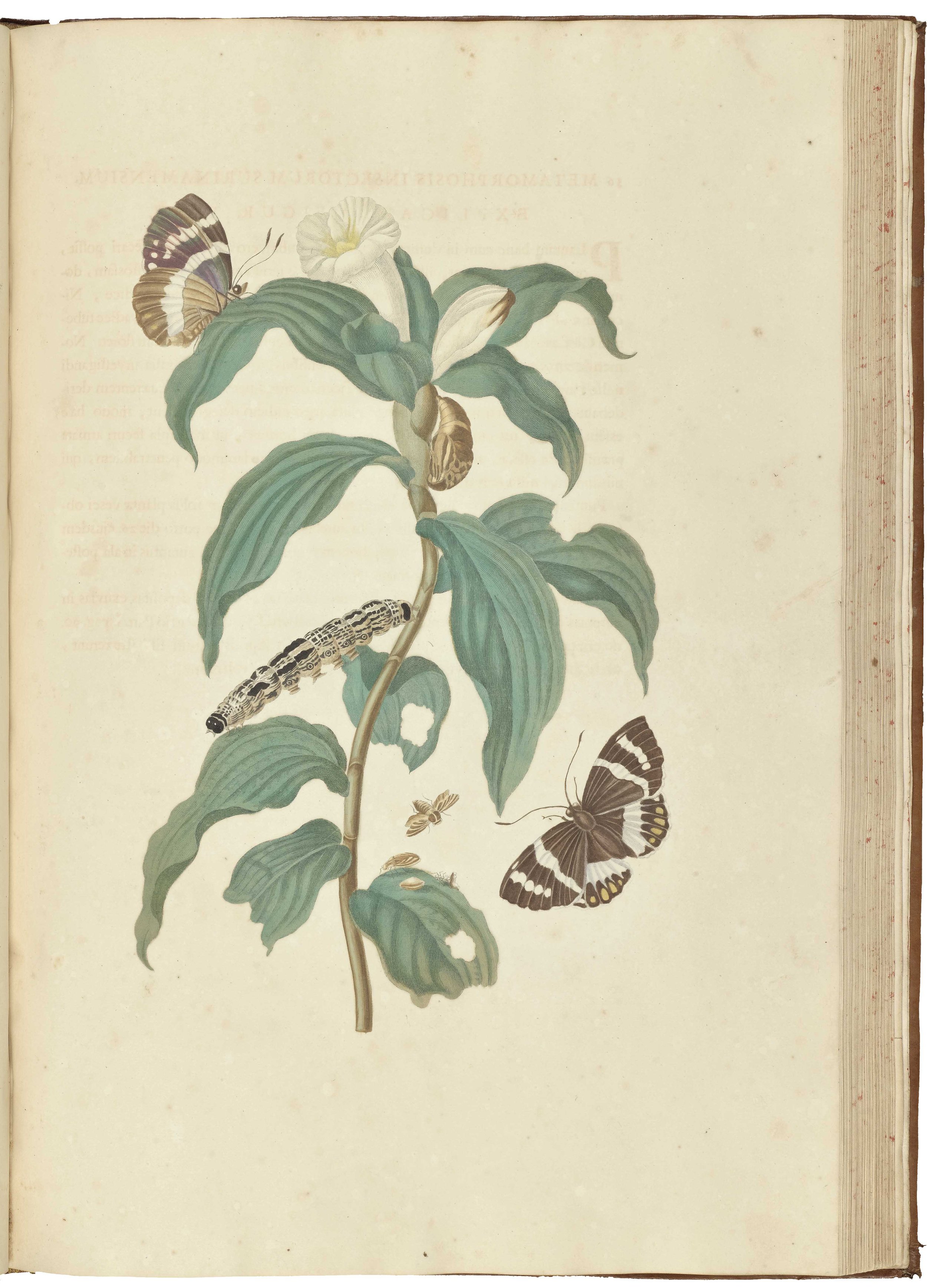Maria Sibylla Merian and the Origins of Ecology
OSGF
One of the many factors that helped define the scientific revolution in Europe was the transition towards an accurate depiction of flora and fauna. Up until this point, many artists would incorporate insects into their botanical compositions but it was never guaranteed that those insects interacted with the plants they were painted with in real life. One woman who was instrumental in the shift towards ecologically accurate illustrations was Maria Sibylla Merian. Born in April of 1647, Merian created striking works and is regarded as the first ecologist of Europe. Read on to learn more about her work and to watch a video by Merian scholar Dr. Kay Etheridge.
In 1660, a young Maria Sibylla Merian was spending her days observing the patterns of silkworms and detailing them in her journal. A child growing up in Frankfurt during the mid-17th century certainly didn’t have the trappings of today’s technological advances so it’s understandable that some creativity was needed. Regardless, Merian’s childhood fascination would to start her on a distinct path which she would build for the rest of her life.
Jacob Marrel was a German engraver and painter who was active during the Dutch Golden Age.
The interest in silkworms shifted to a focus on moths and butterflies, both belonging to the order Lepidoptera. These early journal observations continued into adulthood as she soon became an expert not only on insects themselves but also their hosts and interactions with other species. Prior to this time insects had been incorporated into paintings but just as decoration, paying no real attention to whether or not these species would ever interact with the depicted plants in real life. This can be seen somewhat in the works of her step-father, Jacob Marrel in his work, Tulpenboeken. In it, he depicts the infamous ‘breaking’ tulips which caused a nation-wide craze later dubbed tulipomania. This familial connection to a well-known engraver and illustrator certainly influenced Merian’s artistic style but it was her accurate depiction of the insect interactions that set her apart.
For Merian it was essential that her illustrations included not just insects but also depicted which insects would interact with other insects, plants or even animals. This detailing of species interactions and relationships is one of the keystones of what is now known as ecology and Merian was one of the first Europeans to ever document them. Through the continued publishing of her illustrations and observations, she set a precedent in scientific illustration providing a high degree of accuracy and detail. This is seen most notably in her work, Metamorphosis Insectorum Surinamensium… which was published following her travels to Dutch colonized Suriname in 1699. In Metamorphosis Merian identifies several insect species which had specialist relationships, meaning the insect feeds only on certain plants for which would serve as a host for food or egg-laying.
Despite her high quality work, some who saw Metamorphosis Insectorum Surinamensium… and knew Merian had never been formally trained deemed her to be an amateur. It wasn’t until later that scientists like Carl Linnaeus drew from Merian’s work to inform the creation of tropical plant taxonomy and began to pay respect to her contributions to science. This has been underscored by the recent work of Dr. Kay Etheridge and colleagues across the globe who are championing Merian as the first European ecologist.
Dr. Kay Etheridge is a researcher and Professor Emeritus of Biology at Gettysburg College in Pennsylvania. Along with Henrietta McBurney, she has led a residential short course at Oak Spring highlighting natural history illustrators such as Merian and others. During a recent visit to Oak Spring Garden Library, Kay generously shared her insights and discussed the importance of Maria Sibylla Merian with the context of the library’s collections. In the video below learn about some of the works which demonstrate how Maria Sibylla Merian’s influence can be seen in botanical illustrations done by her daughters and by later contemporaries.
Thank you to Dr. Kay Etheridge for her time and insights. Some of these works are on display in the exhibit “Making Her Mark Making Her Mark: A History of Women Artists in Europe, 1400-1800” at the Art Museum of Ontario.
References:
Etheridge, Kay. "Maria Sibylla Merian: The First Ecologist?" Women and Science: Figures and representations – 17th century to present (Cambridge Scholars Publishing, 2011), 31-61.
Valiant, Sharon. “Maria Sibylla Merian: Recovering an Eighteenth-Century Legend.” Eighteenth-Century Studies, vol. 26, no. 3, 1993, pp. 467–79. JSTOR, https://doi.org/10.2307/2739414.



